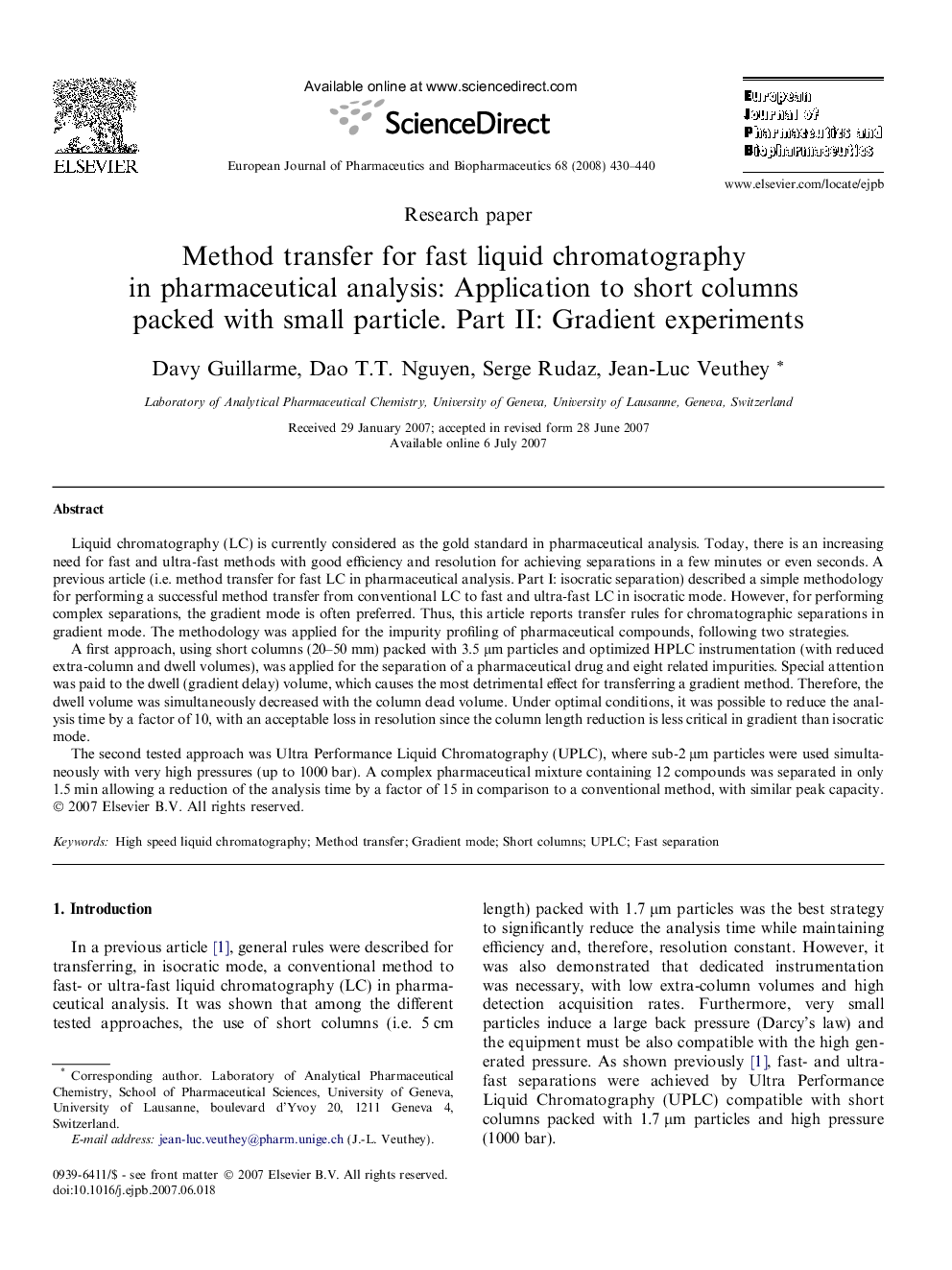| کد مقاله | کد نشریه | سال انتشار | مقاله انگلیسی | نسخه تمام متن |
|---|---|---|---|---|
| 2085687 | 1545399 | 2008 | 11 صفحه PDF | دانلود رایگان |

Liquid chromatography (LC) is currently considered as the gold standard in pharmaceutical analysis. Today, there is an increasing need for fast and ultra-fast methods with good efficiency and resolution for achieving separations in a few minutes or even seconds. A previous article (i.e. method transfer for fast LC in pharmaceutical analysis. Part I: isocratic separation) described a simple methodology for performing a successful method transfer from conventional LC to fast and ultra-fast LC in isocratic mode. However, for performing complex separations, the gradient mode is often preferred. Thus, this article reports transfer rules for chromatographic separations in gradient mode. The methodology was applied for the impurity profiling of pharmaceutical compounds, following two strategies.A first approach, using short columns (20–50 mm) packed with 3.5 μm particles and optimized HPLC instrumentation (with reduced extra-column and dwell volumes), was applied for the separation of a pharmaceutical drug and eight related impurities. Special attention was paid to the dwell (gradient delay) volume, which causes the most detrimental effect for transferring a gradient method. Therefore, the dwell volume was simultaneously decreased with the column dead volume. Under optimal conditions, it was possible to reduce the analysis time by a factor of 10, with an acceptable loss in resolution since the column length reduction is less critical in gradient than isocratic mode.The second tested approach was Ultra Performance Liquid Chromatography (UPLC), where sub-2 μm particles were used simultaneously with very high pressures (up to 1000 bar). A complex pharmaceutical mixture containing 12 compounds was separated in only 1.5 min allowing a reduction of the analysis time by a factor of 15 in comparison to a conventional method, with similar peak capacity.
Journal: European Journal of Pharmaceutics and Biopharmaceutics - Volume 68, Issue 2, February 2008, Pages 430–440